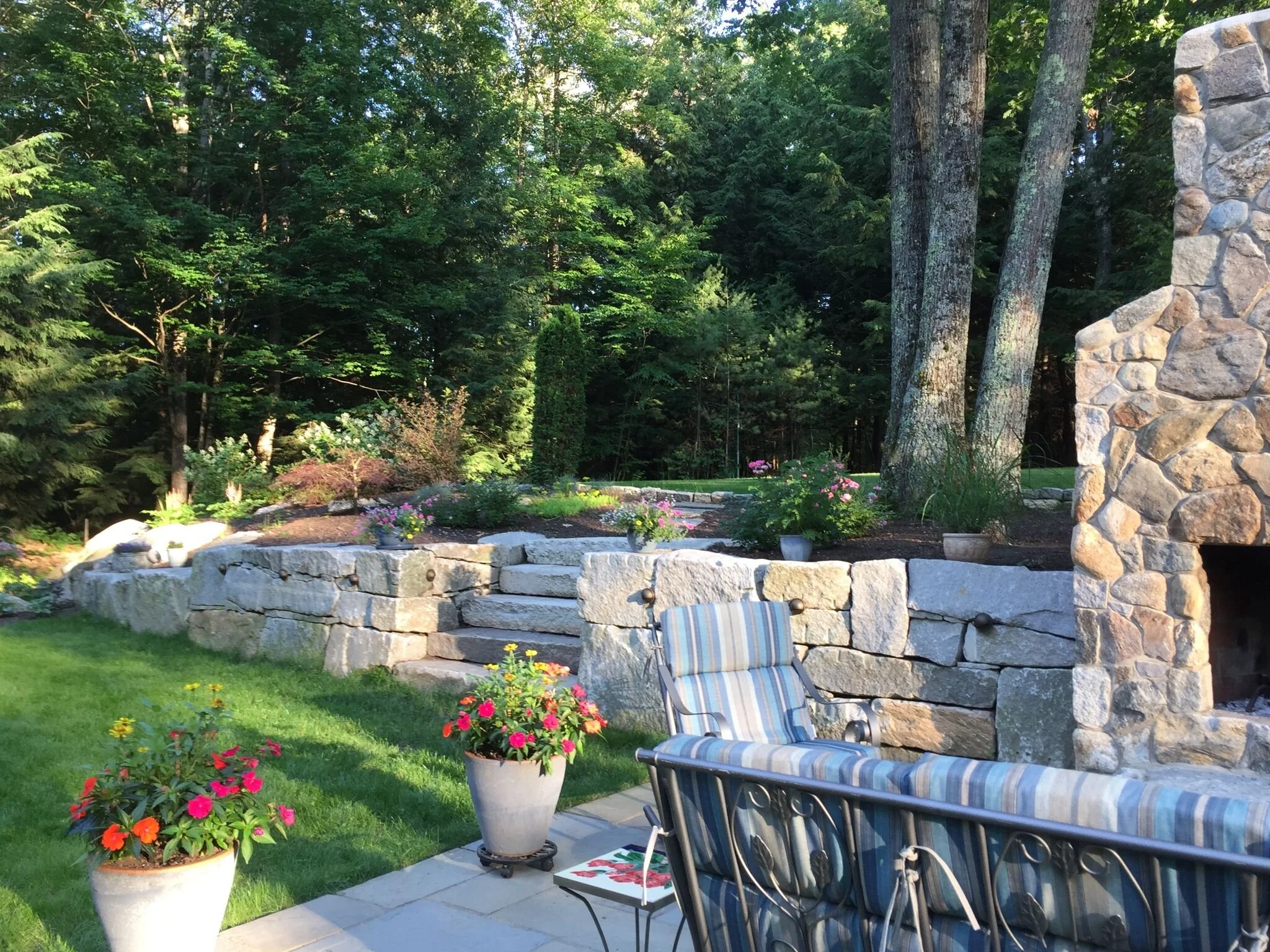How to Add Strength to Masonry Retaining Walls
Expert masonry makes all the difference to the strength and durability of retaining walls built in Milford, NH. Retaining walls can take on a beating from the weather and bear a load burden from the surrounding landscape. So, it is important to make sure the proper precautions are made during the planning and construction phases of masonry retaining walls to lengthen and ensure their longevity.
Giving Details to Your Landscape Architect
A big concern when planning a masonry retaining wall is considering the nearby load that could potentially affect it. A regular retaining wall cannot support excessive loads that are within 3 feet of the top of the wall for long periods of time. For that reason, you will want to let your landscape architect know about anything near the wall that could pose an issue, such as large vehicles that will be regularly parked near it.
Related: Landscape Design Ideas for Beautiful Seating Walls in Amherst, NH
What can happen is what’s called a blowout failure. If this risk is not properly accounted for when preparing the wall’s construction, the load over time could lead to the top of the retaining wall starting to bulge forward. At that point the wall is not safe. If the wall must endure large amounts of weight, then it is necessary to incorporate larger footers and possibly anchor points, depending on the severity of the load.
Discussing Drainage Details
In order for your masonry retaining wall to stay as strong as possible for years to come, you need to have the appropriate drainage in place to prevent any erosion made by water. This type of erosion can wash away sections of the dirt around the wall and lead to the development of a dangerous weak spot in the wall’s structure. If the retaining wall is downhill, then the appropriate steps must be taken by the contractor to keep water away from the foundation of the retaining wall. If this is the case, then the native soil may need to be replaced with materials such as gravel. This adjustment should drastically improve the drainage and prevent water from pooling up behind the masonry retaining wall. It will also prevent the base of the retaining wall from being affected by freeze-thaw cycles.
Related: 4 Innovative Ways to Utilize Retaining Walls in Your Laconia, NH, Landscape Design
Digging the Proper Hole
Digging the right depth and width for the base can increase the strength and lifetime of a masonry retaining wall. The specifics required depend on a few factors such as how tall the wall will be, the soil type it will be built on, and the depth of the freeze line. Masonry walls need the footings to be dug and placed below the freeze line. This will prevent any water that gets around the retaining wall’s base from freezing and pushing it out of place. Depending on the external load factors, the soil behind the retaining wall will need to be dug out to accommodate appropriate reinforcements. Contractors may consult a residential soil reinforcement chart for the appropriate countermeasures that need to be taken depending on certain circumstances. Each retaining wall has its own set of unique needs, but these steps will improve the overall strength of your masonry retaining wall.

